Comprensión de la corriente, la potencia y las aplicaciones de 240 voltios
Comprensión de la potencia y las aplicaciones de la corriente de 240 voltios
La electricidad juega un papel vital en nuestra vida diaria, y uno de los estándares de energía más utilizados en hogares e industrias es la corriente de 240 voltios . Este nivel de voltaje es conocido por suministrar energía de forma más eficiente, lo que lo hace adecuado para electrodomésticos de alta demanda y aplicaciones industriales. Comprender cómo funciona la corriente de 240 voltios , sus ventajas y sus aplicaciones puede ayudar a propietarios de viviendas, electricistas e ingenieros a tomar decisiones informadas.
En esta guía completa, exploraremos los fundamentos de la corriente de 240 voltios , su comparación con otros sistemas de voltaje y dónde se utiliza con mayor frecuencia. También abordaremos consideraciones de seguridad y las ventajas de usar corriente de 240 voltios tanto en entornos residenciales como industriales.
- ¿Qué es la potencia de corriente de 240 voltios?
- Ventajas de utilizar corriente de 240 voltios
- Comparación de sistemas de corriente de 240 voltios frente a sistemas de 120 voltios
- Aplicaciones comunes de la corriente de 240 voltios
- Consideraciones de seguridad para la alimentación de corriente de 240 voltios
- Cómo actualizar a una fuente de alimentación de 240 voltios
¿Qué es la potencia de corriente de 240 voltios?
Para comprender completamente la corriente eléctrica de 240 voltios , es importante comenzar con los conceptos básicos de voltaje eléctrico y distribución de energía.
Definición de potencia de corriente de 240 voltios
La corriente de 240 voltios se refiere al nivel de voltaje eléctrico comúnmente utilizado en aplicaciones residenciales e industriales. Generalmente se suministra mediante un sistema de fase dividida en Norteamérica o un sistema monofásico en otras partes del mundo. Este sistema permite que los electrodomésticos de mayor potencia funcionen con mayor eficiencia que los circuitos estándar de 120 V.
Cómo funciona la corriente de 240 voltios
En el sistema de fase dividida (común en EE. UU. y Canadá), un transformador proporciona 240 V combinando dos ramales de 120 V de corriente alterna (CA). Los dos ramales están desfasados 180 grados, lo que crea la diferencia de potencial total de 240 V.
Para aparatos de 120 V , solo se utiliza una pata y un cable neutro.
Para electrodomésticos de 240 V , se utilizan ambas patas, duplicando el voltaje y manteniendo menor la demanda de corriente.
Este sistema reduce el amperaje requerido, evitando la acumulación excesiva de calor y haciendo que la corriente de 240 voltios sea una opción más segura y eficiente para aplicaciones de trabajo pesado.
>>Vea también Formas seguras y efectivas de cargar su hoverboard
Ventajas de utilizar corriente de 240 voltios
Cambiar o utilizar energía eléctrica de 240 voltios conlleva varias ventajas, especialmente en eficiencia y rendimiento.
1. Entrega de energía más eficiente
Un voltaje más alto permite que los dispositivos eléctricos funcionen con menor corriente, lo que reduce la resistencia y la pérdida de energía. Esto mejora la eficiencia y minimiza el desperdicio de electricidad.
2. Reducción de costos de cableado eléctrico
Dado que la corriente de 240 voltios requiere una corriente menor para la misma salida de potencia, el cableado puede ser más delgado en comparación con los sistemas de menor voltaje, lo que genera ahorros en costos de materiales.
3. Mejor rendimiento para electrodomésticos de alta potencia
Los electrodomésticos como hornos, secadoras, calentadores de agua y sistemas HVAC funcionan de manera más eficiente con corriente de 240 voltios , ya que consumen menos corriente y generan menos calor.
4. Menor riesgo de sobrecalentamiento y peligro de incendio.
Un menor flujo de corriente produce menos calor en el cableado eléctrico, lo que reduce el riesgo de sobrecalentamiento y posibles peligros de incendio.
5. Compatibilidad con equipos industriales
Muchas máquinas y herramientas industriales están diseñadas para funcionar con corriente eléctrica de 240 voltios , lo que la convierte en el estándar para entornos comerciales y de fábrica.
Comparación de sistemas de corriente de 240 voltios frente a sistemas de 120 voltios
Para comprender los beneficios de la corriente eléctrica de 240 voltios , comparémosla con el sistema de 120 V más común que se utiliza en los hogares.
|
Característica |
Sistema de 120 voltios |
Corriente de 240 voltios |
|
Eficiencia energética |
Menos eficiente, requiere más corriente |
Más eficiente, requiere menos corriente. |
|
Aplicaciones comunes |
Pequeños electrodomésticos, iluminación, electrónica. |
Grandes electrodomésticos, herramientas industriales |
|
Generación de calor |
Mayor acumulación de calor en los cables |
Menor acumulación de calor, cableado más seguro |
|
Requisitos de cableado |
Cables más gruesos debido a una mayor corriente |
Es posible utilizar cables más delgados debido a una corriente más baja |
|
Costo eléctrico |
Costos más altos debido a la ineficiencia |
Reducir los costes energéticos con eficiencia |
Para electrodomésticos de alta potencia, la corriente eléctrica de 240 voltios es claramente la mejor opción.
Aplicaciones comunes de la corriente de 240 voltios
La corriente de 240 voltios se utiliza ampliamente en diversas industrias y aplicaciones residenciales. A continuación, se presentan algunos de los usos más comunes.
1. Aplicaciones residenciales
a. Electrodomésticos de cocina
Muchos electrodomésticos de cocina modernos requieren corriente de 240 voltios , incluidos:
Hornos y estufas eléctricas
Microondas grandes
Cafeteras de alta gama
b. Sistemas de calefacción y refrigeración
Unidades centrales de aire acondicionado
Calentadores de agua eléctricos
Calentadores de zócalo
c. Equipo de lavandería
Secadoras de ropa
Lavadoras con resistencias
2. Usos industriales y comerciales
a. Maquinaria pesada
Las fábricas y talleres utilizan corriente eléctrica de 240 voltios para máquinas como:
Sierras y taladros industriales
Equipo de soldadura
Motores de cintas transportadoras
b. Equipo agrícola
Bombas de agua
Grandes sistemas de riego
Maquinaria para granjas lecheras
c. Edificios de oficinas y comerciales
Grandes sistemas HVAC
Refrigeración comercial
generadores de respaldo
3. Vehículos eléctricos (VE)
La mayoría de los cargadores de vehículos eléctricos (EV) funcionan con corriente de 240 voltios , lo que permite una carga más rápida en comparación con las tomas de corriente estándar de 120 V.
Consideraciones de seguridad para la alimentación de corriente de 240 voltios
Si bien la corriente eléctrica de 240 voltios es altamente eficiente, también requiere precauciones de seguridad adecuadas para evitar riesgos eléctricos.
1. Conexión a tierra adecuada
Asegúrese siempre que los circuitos de alimentación de corriente de 240 voltios estén conectados a tierra correctamente para evitar descargas eléctricas.
2. Protección del circuito
Utilice disyuntores y fusibles con capacidad adecuada para evitar sobrecargas.
3. Instalación calificada
La instalación de circuitos eléctricos de corriente de 240 voltios siempre debe ser realizada por un electricista autorizado.
4. Mantenimiento regular
Las inspecciones periódicas del cableado, los enchufes y los electrodomésticos ayudan a prevenir posibles peligros.
>>Vea también Cómo convertir 2048 vatios-hora a amperios-hora
Cómo actualizar a una fuente de alimentación de 240 voltios
Si está considerando actualizar de un sistema de 120 V a una fuente de alimentación de corriente de 240 voltios , siga estos pasos:
1. Revise su panel eléctrico
Asegúrese de que el panel eléctrico de su casa admita 240 voltios . La mayoría de las casas modernas cuentan con un sistema de fase dividida de 240 V.
2. Instale un disyuntor bipolar
Se requiere un interruptor bipolar para entregar 240 V mediante la conexión a ambos cables activos de 120 V.
3. Actualice el cableado si es necesario
Consulte con un electricista para determinar si su cableado existente es suficiente para una corriente eléctrica de 240 voltios .
4. Utilice enchufes y tomas de corriente adecuados
Los electrodomésticos que requieren corriente de 240 voltios necesitan enchufes y tomas de corriente especializados.
La corriente de 240 voltios es un estándar eléctrico esencial para aplicaciones de alta potencia en entornos residenciales, comerciales e industriales. Al comprender su funcionamiento, sus beneficios y sus aplicaciones, los propietarios de viviendas y empresas pueden tomar decisiones informadas sobre el uso y la eficiencia energética.
Desde un mayor ahorro de energía hasta una mayor seguridad, las ventajas de la corriente de 240 voltios la convierten en la opción preferida para electrodomésticos y maquinaria de alto rendimiento. Ya sea que esté actualizando el sistema eléctrico de su hogar o instalando un espacio de trabajo industrial, conocer los fundamentos de la corriente de 240 voltios garantiza un suministro eléctrico confiable y eficiente.

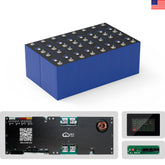

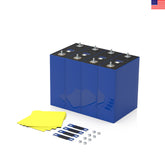
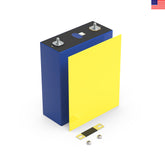
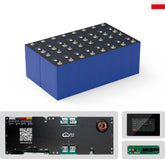

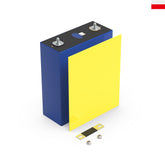

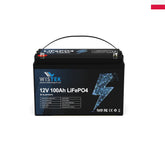
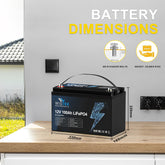



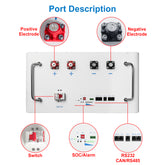
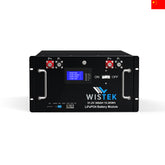
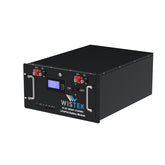


Leave a comment
All blog comments are checked prior to publishing